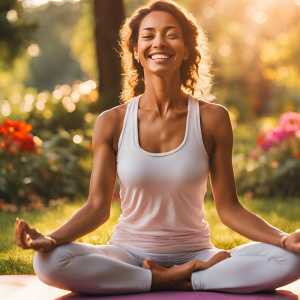
Hey Amazing Women!
Let’s be real, being a modern woman is a superpower. We’re expected to be everything to everyone – a successful professional, a loving partner, a nurturing parent, a supportive friend – all while somehow managing to keep our own lives together. It’s a lot! This blog, “The Modern Woman’s Guide to Conquering the Chaos,” is your resource for navigating the complexities of modern life with grace, strength, and a touch of sparkle.
We’re here to help you find balance, embrace your beauty (inside and out), and create a life that truly reflects your values and aspirations. Because you deserve to thrive, not just survive.
Work & Career: Slaying the Professional Game
Whether you’re climbing the corporate ladder or building your own empire, we’ve got your back.
- Career Confidence: Develop the confidence and skills you need to excel in your career. We’ll share tips for networking, negotiation, and leadership.
- Work-Life Integration (Not Balance!): Let’s ditch the myth of perfect work-life balance and focus on integration. Learn how to manage your time effectively and prioritize what matters most.
- Boss Moves: Discover strategies for setting boundaries, advocating for yourself, and achieving your career goals.
Family & Relationships: Nurturing Connections
Building strong and meaningful relationships is essential for a happy life.
- Quality Time: Learn how to prioritize quality time with your loved ones, even when life gets busy. We’ll share ideas for creating lasting memories.
- Communication is Key: Effective communication is the foundation of healthy relationships. We’ll explore tips for expressing your needs and resolving conflicts constructively.
- Self-Love First: Remember to prioritize your relationship with yourself. Self-care is not selfish; it’s essential for being a good partner, parent, and friend.
Beauty & Style: Radiating Confidence
Beauty is more than skin deep. It’s about feeling confident and comfortable in your own skin.
- Skincare Savvy: Discover effective skincare routines and product recommendations for a healthy and glowing complexion.
- Makeup Magic: Learn simple makeup techniques to enhance your natural features and boost your confidence.
- Style Your Story: Develop a personal style that reflects your personality and makes you feel amazing.
Wellness & Self-Care: Recharging Your Batteries
Taking care of your physical and mental well-being is crucial for conquering the chaos.
- Healthy Habits: Explore tips for incorporating healthy habits into your daily routine, from nutritious eating to regular exercise.
- Stress Management: Learn effective stress management techniques to help you stay calm and centered, even during challenging times.
- Mindful Living: Embrace the power of mindfulness to cultivate presence and appreciate the little moments in life.
Join the Sisterhood!
We’re building a supportive community of modern women who are committed to living their best lives. Subscribe to our newsletter for exclusive content, inspiring stories, and practical tips. Follow us on social media to connect with like-minded women and share your own journey.
(Call to Action): What are your biggest challenges as a modern woman? Share your thoughts in the comments below!
Meta Description: Juggling work, family, and personal life? This blog offers practical tips and empowering advice for modern women seeking balance, beauty, and fulfillment in all areas of their lives.
Tags: modern woman, work-life balance, women’s lifestyle, beauty tips, self-care, healthy living, career tips, family life, relationships, personal growth, time management, stress management, women’s health, fashion tips, beauty hacks, lifestyle blog, women’s blog, modern women, empowered women, achieving balance, women’s issues,









 Make sure you turn on the alarm clock, so you do not miss any of our videos!
Make sure you turn on the alarm clock, so you do not miss any of our videos!